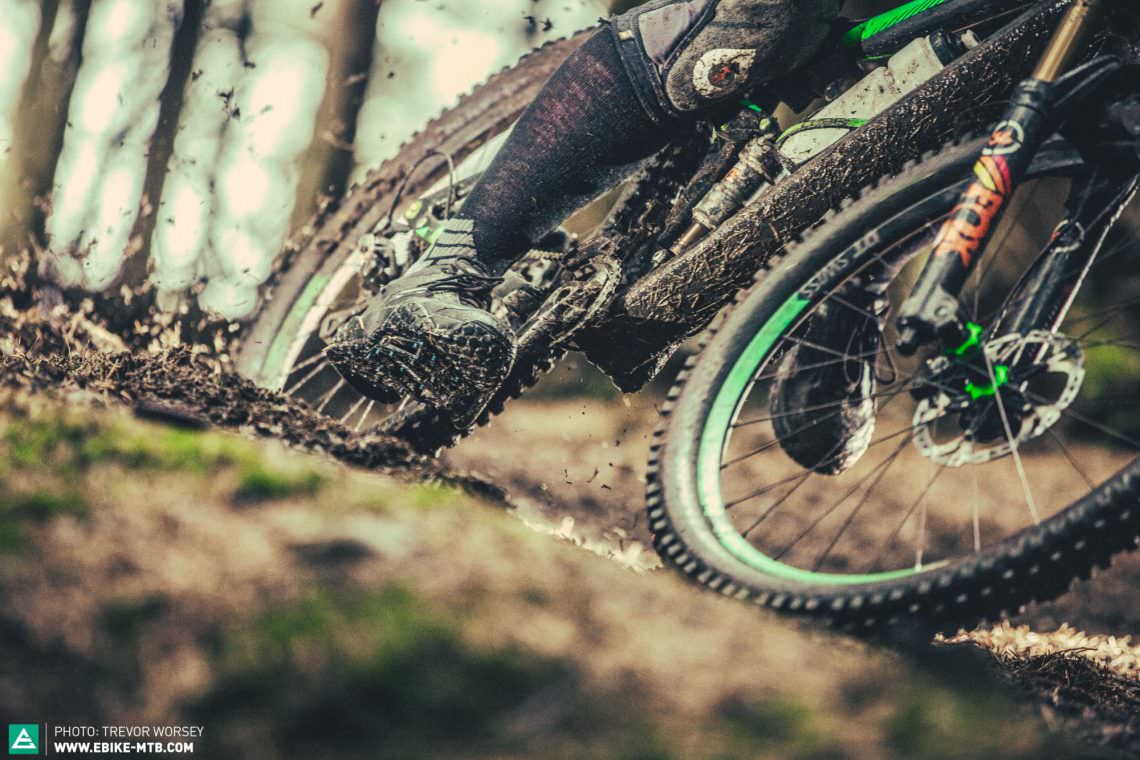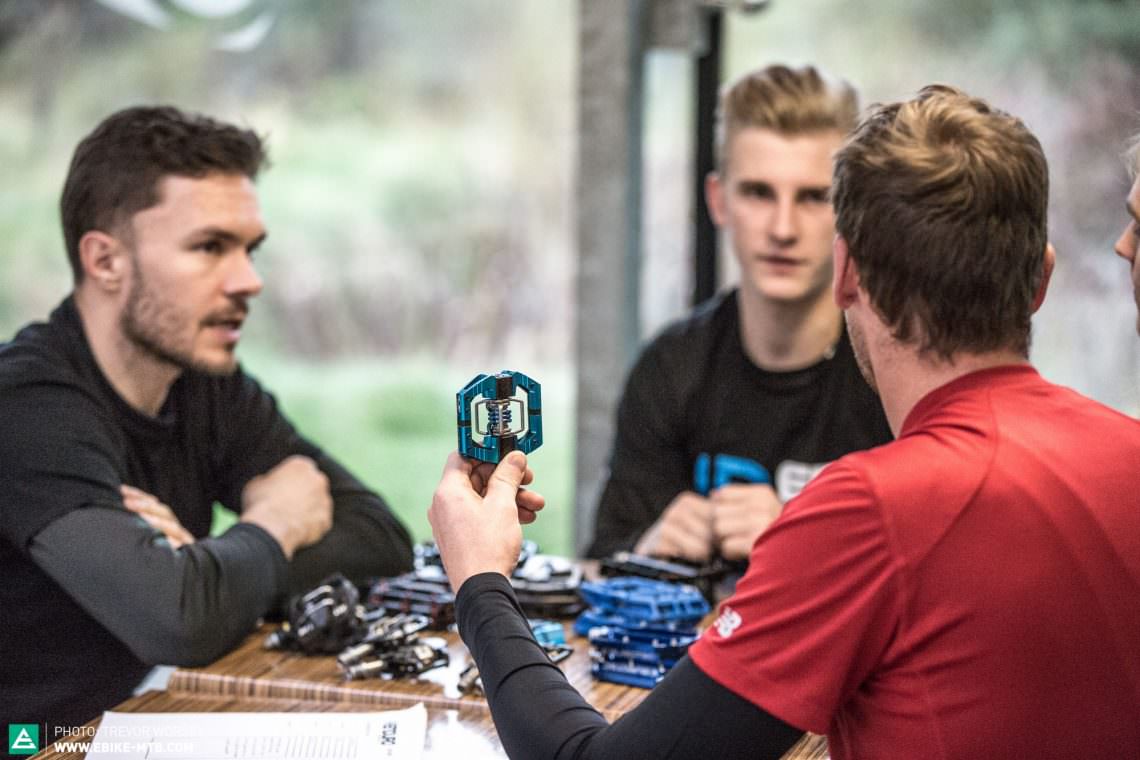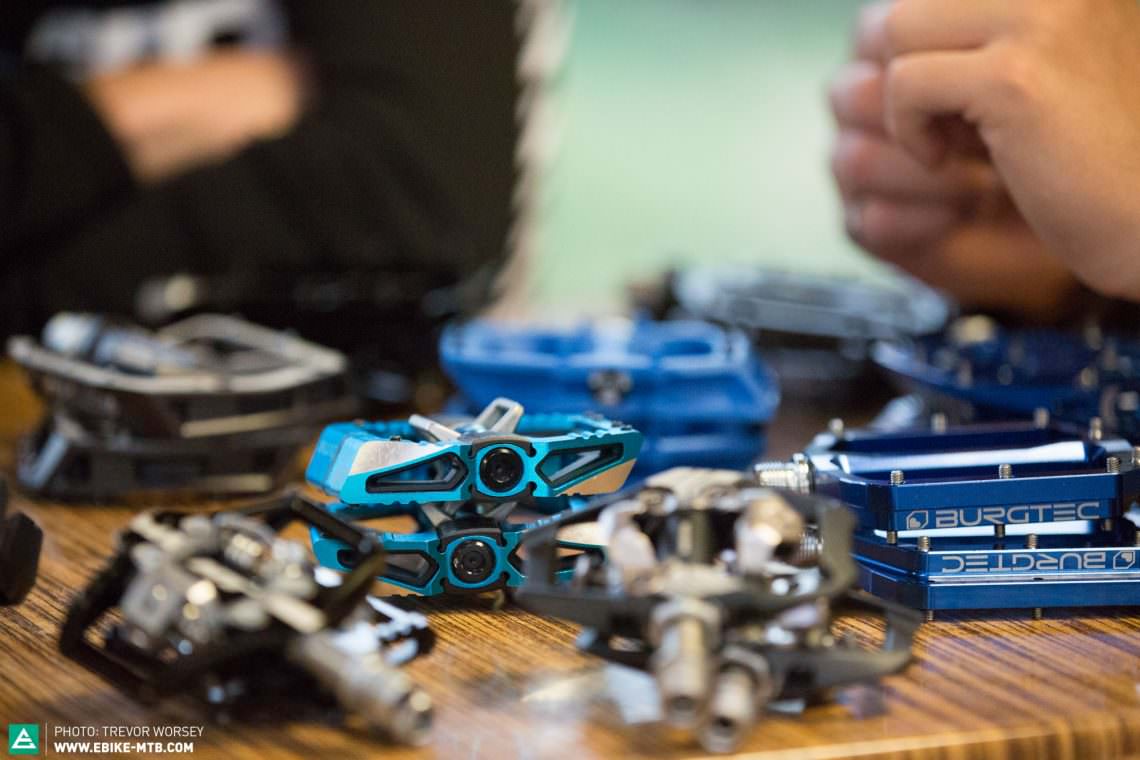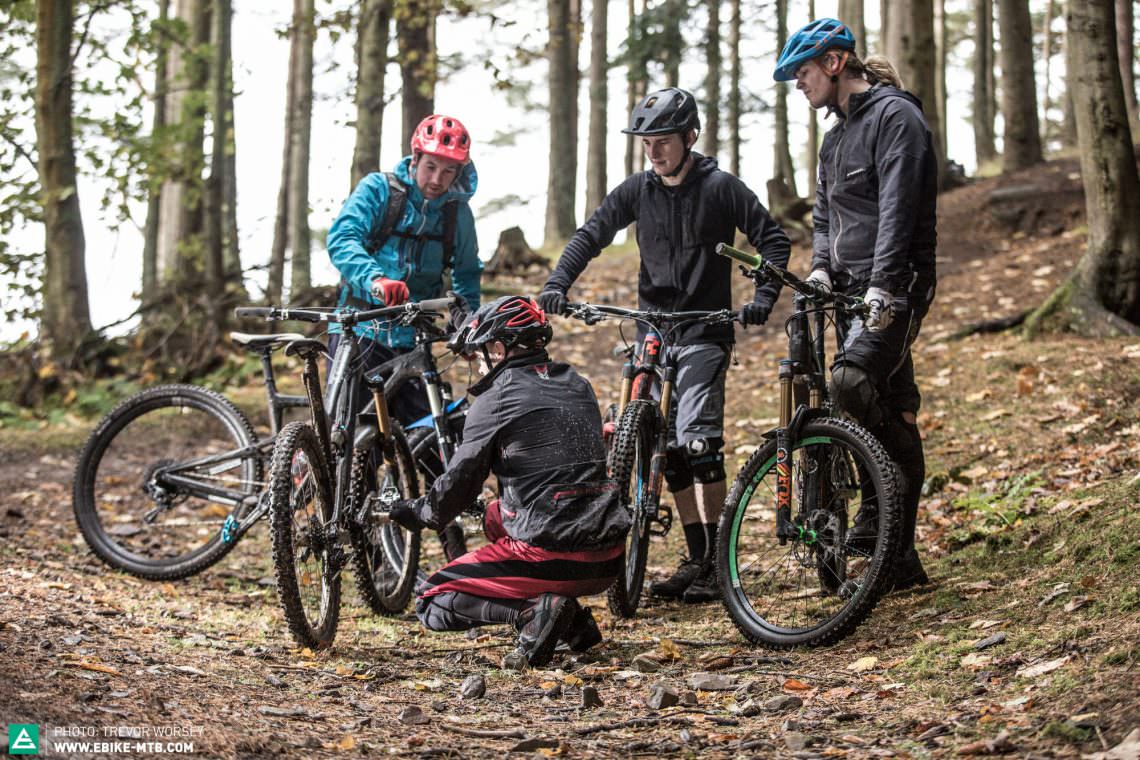When it comes to upgrading, it’s easy to concentrate on the sexy components: a new carbon handlebar, brakes powerful enough to peel the skin from the earth, or suspension units so sophisticated they make an F1 car look like the village idiot. But let’s not forget about the importance of good pedals! We’ve put the most popular flats and clipless pedals through their paces to find the best one for you in our Pedal Group Test.
The pedal is a fundamental connection between you and the bike – it defines the way you ride and how your bike interacts with the trail. Every berm, compression, jump, and corner is controlled through your interaction with the grips and pedals (or less if you are getting really loose). If your feet are blowing off in all directions at the merest sniff of rough terrain, or your knees feel like they belong to a seventy-year-old, it’s time to look at your pedal choice.
Flats vs. Clipless
Before we move further, there is a minefield to cross! There are two types of pedals: in one corner we have ‘flats,’ which are the standard platform pedals with pins that we all know and love, and in the other corner the confusingly named ‘clipless,’ where your shoe is clipped to the pedal. The age old question of ‘clipless vs flats’ is an emotional topic that often reduces internet forums to childish warfare – but in the end, it’s really a matter of personal preference. It’s possible to shred hard and have a great time on either type, and there are advantages and disadvantages to both. Most racers tend towards clipless pedals, as the increased efficiency and the ability to sneak in a few extra pedal strokes puts them at an advantage. Clipless riders prefer the improved connection to the bike, but it’s easy to get lazy and use poor technique when jumping.

In defence of flat pedals, fans will shout, “What about Sam Hill?” – but let’s put that argument to bed. Sam Hill is a freak of MTB nature, and he could win a race in high heels! However, let’s not write off the flat pedal. Riding flats will not only supercharge your technique as you have to pedal and weight the bike properly but will also have you grinning from ear to ear. Those with bad knees will also enjoy the free feeling of flat pedals.
In the end there’s no definitive answer – try both and see which one makes you happiest.
The Testing Process
For the last four months we have been riding, testing, and analysing nearly all the pedals on the market and have brought you our favourite ‘dirty dozen.’ After thousands of trail kilometers, full strip-downs, and thorough bashings, our test team of adventurers, elite racers, and engineers have assembled the hottest twelve pedals that have impressed our tough jury.

Anatomy of a Pedal
Float
Float is the amount of free lateral movement your feet have in the pedals when clipped in. Moving from a sitting to a standing position, your foot axis position changes, and float allows your foot to change position slightly. Biomechanics suggests at least 4 degrees of float to allow your foot to rotate to its optimum position.
Removable Pins
Both flat and clipless pedals use removable pins that can be inserted (and replaced should they get damaged from rock strikes) to allow the grip to be customised. Bottom loading pins are easier to replace, as the heads are protected. Long, thin, sharp pins add massive amounts of grip, but also cut into your shoes and your shins should you slip. Overly long pins can also cause the pedals to flip over when relocating – it’s a question of balance.
Bearings and Bushes
Some pedals are fitted with bearings (ball bearings in a race) and some are fitted with bushes (low friction materials that slide over each other), and many have a main bearing at the load point and bushes for support along the axle. All high-end pedals are serviceable by the home mechanic, and many feature a grease point for maintenance. It’s important for a pedal to be well sealed and many feature o-rings to keep the grime out.
Axle
Axles can be made from a number of different materials, but generally, either steel, chromoly, or titanium is used. Steel is the cheapest and heaviest while titanium is extremely light, but also extremely expensive. Chromoly (steel mixed with chromium and molybdenum) offers a great balance between cost and lightweight performance.
Angled Leading Edge
In order to help deflect rock strikes, most pedals feature an angled leading edge designed to lift the pedal up and over the obstruction. This helps to reduce impact forces and ensure the rider stays in control.

Platform Size
Platform size is important in both flat and clipless pedals. With flat pedals, a large platform provides a secure footing for those with big feet, but if the platform is too large the pedal may feel clumsy and increase the chance of rock strikes. With clipless pedals, a large platform provides support when starting and allows security if you find yourself unclipped on tough terrain, but the disadvantage is increased weight.
Cleats
All clipless pedal systems feature a metal cleat that screws into the shoe to provide a firm connection to the bike. Many brands offer different cleats to provide more or less float, and with some brands, the cleats can be run on opposing sides to adjust the angle where the shoes disengage.
Thickness
The thickness of the pedal body is important; the thinner the body profile, the closer the foot is to the pedaling axis, making the pedal stroke more efficient. Another benefit of thinner profiles is that the pedal has increased ground clearance, causing fewer pedal strikes – on rocky trails 5 mm can make a world of difference. The only disadvantage of thin pedals is that the bearings around the axle need to be physically smaller, which can lead to reduced durability.
Release tension
Some pedal systems like Shimano and HT offer adjustable release tension, allowing you to customise the force required to release the shoe from the pedal. A low tension makes releasing easy for beginners, but as skills increase riders may want to increase the tension (as the cornering forces generated by aggressive riders may result in unexpected releases). Pedal systems like Crankbrothers and Mavic are not adjustable.
Shoes
No matter if you run flat or clipless pedals, the correct shoes are essential. For clipless pedals, dedicated shoes will offer a stiffer sole for increased power transfer. When it comes to flats, the sticky soles of dedicated shoes will improve the connection between rider and bike and increase enjoyment.
The Pedal Group Test
We’ve reviewed the most popular clipless pedals: Clipless Pedal Group Test
Not convinced by clips? Then check out our Flat Pedal Group Test

Did you enjoy this article? If so, we would be stoked if you decide to support us with a monthly contribution. By becoming a supporter of E-MOUNTAINBIKE, you will help secure a sustainable future for high-quality cycling journalism. Click here to learn more.
Words & Photos:









